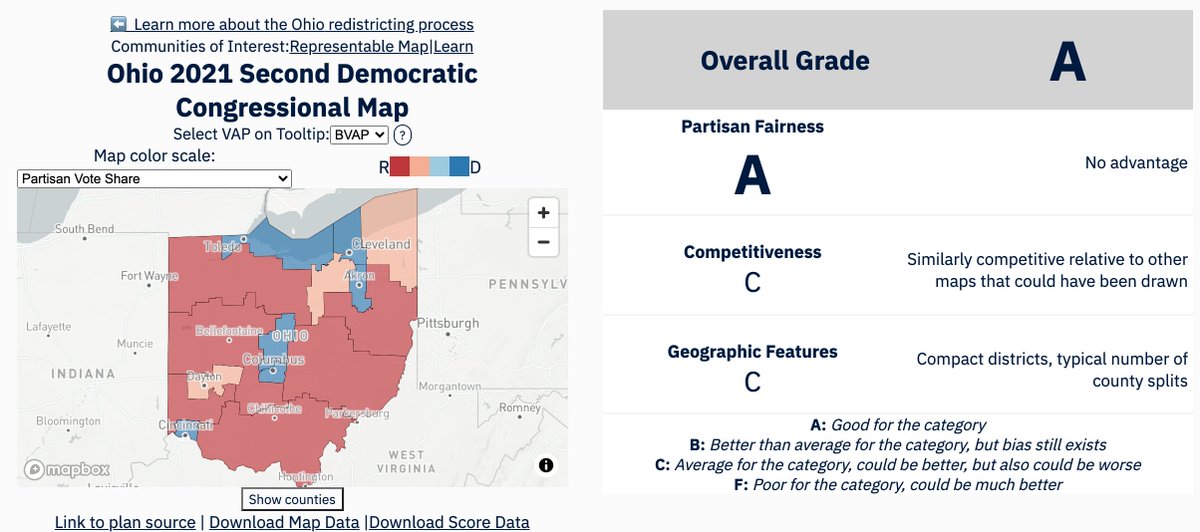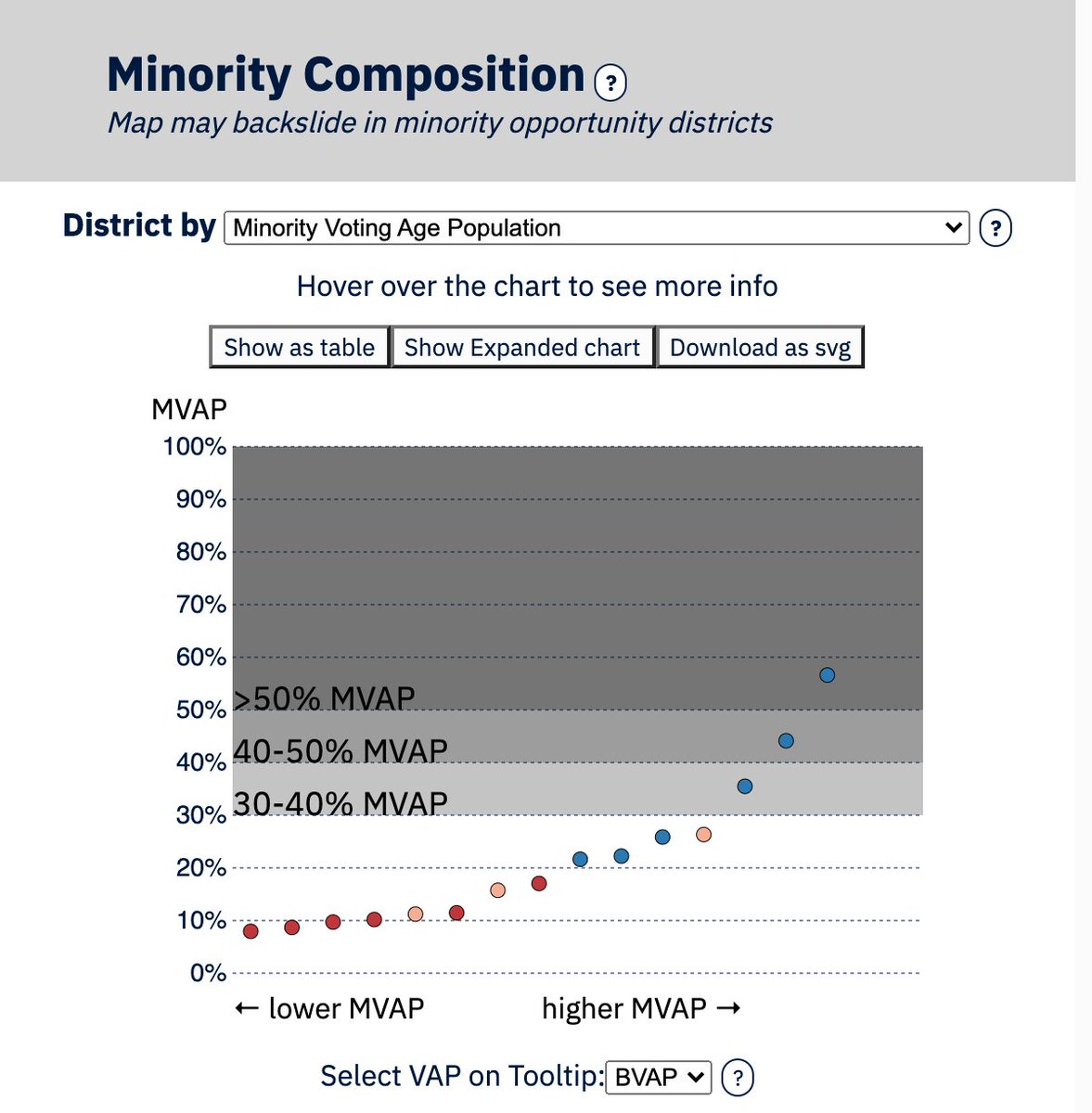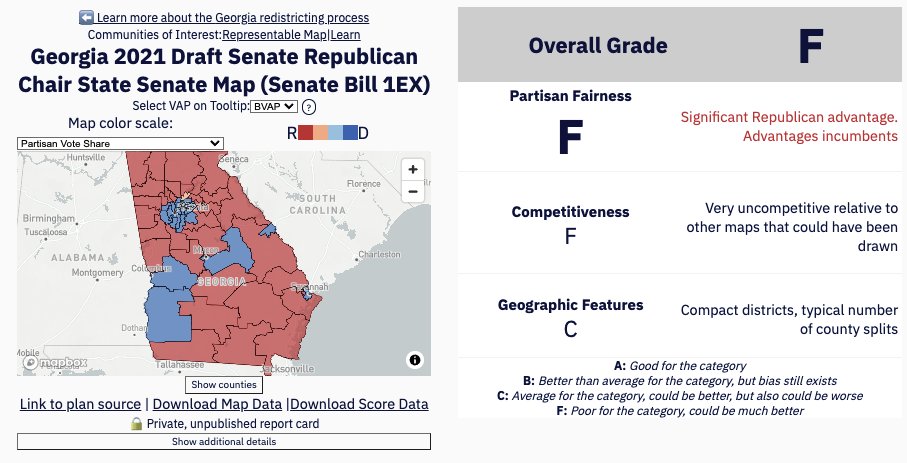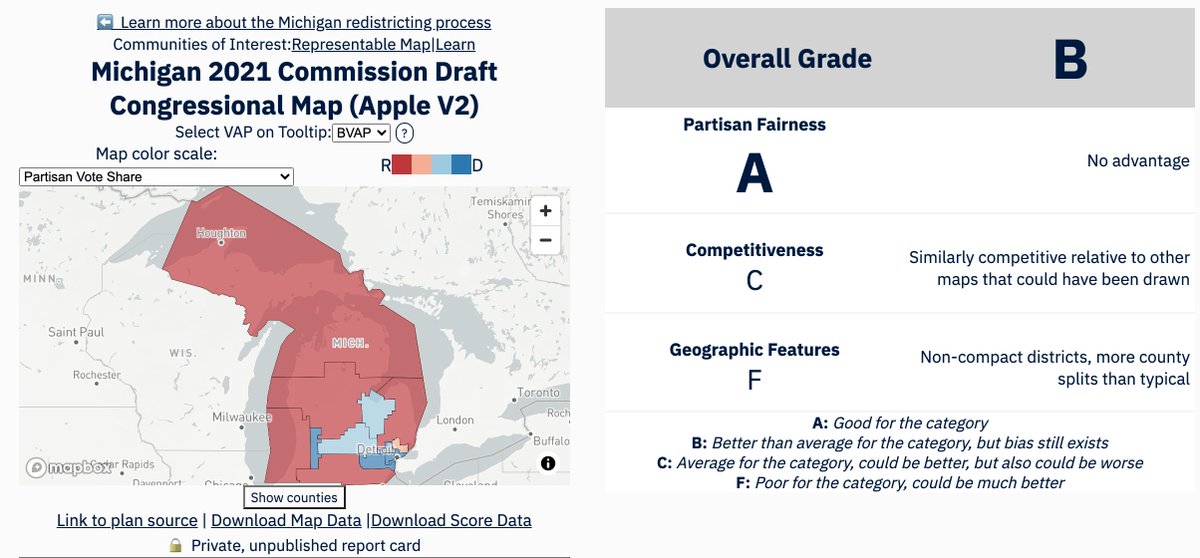The team at the Princeton Gerrymandering Project also has data out for the proposed Alabama Congressional, State Senate, and State House maps.
Congressional: gerrymander.princeton.edu/redistricting-…
Senate: gerrymander.princeton.edu/redistricting-…
House: gerrymander.princeton.edu/redistricting-…
Congressional: gerrymander.princeton.edu/redistricting-…
Senate: gerrymander.princeton.edu/redistricting-…
House: gerrymander.princeton.edu/redistricting-…

For the Congressional map, we fined that it is likely to elect a 6R-1D delegation, the same as the current map.
That one D-district, AL-7, is also a black opportunity-to-elect district, though it far exceeds the 50% BVAP threshold required to make it effective.
That one D-district, AL-7, is also a black opportunity-to-elect district, though it far exceeds the 50% BVAP threshold required to make it effective.

For the State Senate, we believe it would elect 26R-9D senators.
It has two potentially competitive seats, both near Huntsville.
It has 8 districts with a BVAP over 50%.
It has two potentially competitive seats, both near Huntsville.
It has 8 districts with a BVAP over 50%.

The State House map would be expected to elect 78R-27D representatives. All of the Democrats would be elected from districts with a BVAP over 50%.
It has four competitive seats, one near Huntsville, one near Birmingham, one near Talladega, and one near Monroeville.
It has four competitive seats, one near Huntsville, one near Birmingham, one near Talladega, and one near Monroeville.

We should note that our data is based on unofficial @davesredist traces, which were provided to us. Until the official maps are released by the state of Alabama, these are the best we can do.
#PGP_AL #ALPol #Redistricting #FairMaps
@LWVAL
#PGP_AL #ALPol #Redistricting #FairMaps
@LWVAL

• • •
Missing some Tweet in this thread? You can try to
force a refresh




















